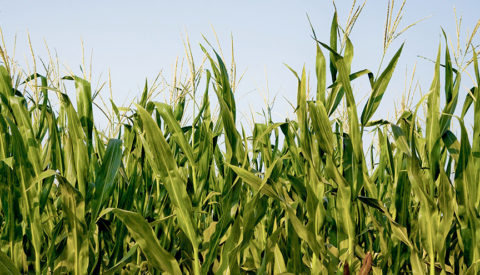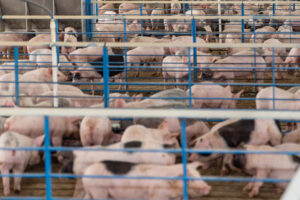For the first six months of the year, both wine sales value and volume dropped 5%. Market Update: Retail Wine Sales Improved in Q2, but Exports Worsened After a rocky start to the year, off-premise retail wine sales firmed a bit in the second quarter as the cloud of uncertainty tied to the rollout of the new U.S. administration’s policy agenda began to dissipate. Wine sales fell 3% in value and 4% in volume versus the same period in 2024, based on my analysis of NIQ data. For the first six months of the year, both wine sales value and volume dropped 5%. Distributor depletions declined 8% in volume and revenue in the second quarter, according to SipSource, a narrow improvement relative to Q1. On-premise depletions are now contracting at a slower rate than off-premise depletions, though the gap is narrow. The disconnect between depletions and retail sales is due to ongoing inventory reductions at the retail level. Wine points of distribution fell 5% in the first half of the year versus the same period a year ago. Consequently, alcoholic beverage wholesalers have made no progress on trimming their bloated inventories thus far in 2025. The premium and luxury segments of the market continue to hold up better than the lower end. There is evidence of significant discounting in the $50+ price tier and, in total, off-premise wine prices slipped 1% during the first seven months of the year, according to consumer price index data. Meanwhile, on-premise prices are still rising. West Coast wineries have struggled to attract visitors in 2025, and club member counts are declining. The direct-to-consumer (DtC) channel has seen some improvement in recent months, in the wake of a disappointing spring. DtC sales by Community Benchmark participants fell 6% in the second quarter on a year-over-year (YOY) basis and were down 5% for the first half of 2025. Revenues were down in all regions. However, the rate of decline slowed to less than 2% in June and July. West Coast wineries have struggled to attract visitors in 2025, and club member counts are declining. Rapidly rising bottle prices in a time of heightened consumer price sensitivity are likely central to the problem. The average price of bottles shipped to consumers rose 8% YOY in the seven months through July, according to figures from Sovos ShipCompliant and Wine Business Analytics. There was considerable variation across regions. Those with larger increases generally saw steeper drops in volume. Retaliatory measures to U.S. tariffs are taking a severe toll on American wine exports. Despite the initial round of tariffs imposed in April and a weakened dollar, domestic wines have yet to wrest any share from imports in the U.S. market. However, retaliatory measures to U.S. tariffs are taking a severe toll on American wine exports. Wine exports fell 38% in value and 25% in volume during the second quarter versus the same period last year, according to the U.S. International Trade Commission. This was primarily due to collapsing exports to Canada, which fell 96% amid widespread provincial bans of American alcohol, representing a loss of more than $100 million to U.S. wine producers. Though far smaller in value, exports to China plunged 60%, and those to the U.K. (the second most important buyer of American wine) tumbled nearly a quarter. Wine Market Outlook: A Muted Near-Term Outlook for Wine Sales It is difficult to get a clear read on the economy today, let alone where it will be in six months. Tariffs and a highly variable policy environment are muddying the tea leaves. Real GDP slipped in the first quarter to -0.5%, mainly due to a surge in imports attempting to beat the tariff clock, before rebounding to 3.3% in the second quarter. Altogether, the economy grew at an annualized rate of 1.4% in the first half of 2025, a substantial slowdown from the 2.8% growth in the second half of 2024. There was some improvement on the inflation front in the spring, but the June and July readings were hotter at 2.9% and 3%, respectively. Employment growth has slowed substantially in recent months following major revisions by the Bureau of Labor Statistics. Even so, the unemployment rate stands at just 4.2%, as labor force growth too has stalled because of a declining immigrant population (both legal and illegal). The Pew Research Center indicates that the number of immigrants living in the U.S. declined by 1.4 million from January to June. Wages continue to grow in real terms, and a resurgent stock market added to household wealth in the second quarter. Consumer sentiment, however, remains deeply depressed. There are signs of stress, particularly among lower-income and young consumers. Interest rates are still elevated, and consumer loan delinquencies have risen above their pre-pandemic level, primarily because of a surge in missed student loan payments. Despite this, consumer spending is growing in real terms, though more hesitantly than in 2024. The economic outlook remains murky. There is more clarity on the tariff front, which could alleviate some of the decision-making paralysis that has constrained growth, but this could change on a dime. Tariffs’ ultimate impact on prices and the economy is uncertain but likely to be negative in the near term. Consumers are apt to remain cautious and price-sensitive. The Terrain team believes that sluggish economic growth, sticky inflation and a gradually softening labor market is the most likely scenario going forward. We expect the Federal Reserve to cut interest rates modestly, unless the labor market softens more than anticipated. However, given the White House’s pressure on the Fed to lower rates, a more pronounced reduction is not out of the cards heading into the 2026 primaries. This environment does not support improving consumer confidence or increased spending on discretionary items like wine. Consumers are apt to remain cautious and price-sensitive. Consequently, I don’t expect much change in the trajectory of wine sales in the near term, and elevated wholesale inventories will continue to constrain shipments. Trade frictions are not likely to provide much of a boost to U.S. wineries in the near term. The tariff situation is still in flux due to legal challenges. At this point, wines imported from New Zealand and the EU are subject to a 15% tariff while most other New World imports face levies of 10%. Import prices will inevitably rise, and U.S. wineries could conceivably gain market share. However, this will be offset by lower wine sales, rising input costs and depressed exports. Given consumer price sensitivity, take a cautious stance toward price taking unless you are prepared to sacrifice volume. It will also be imperative to provide and demonstrate value for the price on store shelves, in the tasting room and to club members. There could be some improvement in the economy and a firming in wine sales next year, as the bulk of the One Big Beautiful Bill Act tax benefits will hit before the costs. Nonetheless, economic pressures are not the only cause of slumping wine sales, so a decisive rebound isn’t likely, particularly in the value segment. I remain optimistic that premium and luxury sales will eventually stabilize. Grape Market Outlook: Slumping Wine Sales, Excess Inventory Continue to Weigh on the Grape Market The California grape harvest is underway and progressing on a normal timetable. The crop doesn’t appear to have any major issues, though the hot and dry weather has increased the threat of fire throughout wine country. While it is still early, yields look to be average to slightly below average for most varieties and regions, with the Interior potentially being lighter than the Coast. Given the muted near-term outlook for wine sales, demand is not likely to materially improve before the harvest season ends. Unsold fruit remains abundant, and demand for grapes is lethargic. Wineries are taking a cautious approach to grape purchases because of depressed wine sales, an uncertain economic environment and inventory backlogs that many are working through. Demand for bulk wine also remains subdued and availability ample. Given the muted near-term outlook for wine sales, demand is not likely to materially improve before the harvest season ends. Thus, despite widespread mothballing and vineyard abandonment, a substantial quantity of fruit is likely to go unpicked. The grape crush is almost certain to come in below 3 million tons for a second consecutive year and could turn out significantly smaller. Progress clearly has been made on the supply side. The key question on everyone’s mind is when the market will return to balance. This is impossible to answer with any degree of certainty, as both the demand and supply sides of the equation are ambiguous. Moreover, the answer will differ for each appellation and variety. Grape demand will ultimately depend on the future trajectory of wine sales. This is still murky. In the near term, demand will also be impacted by the speed at which excess wine inventory is absorbed, as it should firm up once this occurs. However, we don’t have reliable data on how much excess inventory exists, let alone what it is composed of, so the timetable for this is uncertain. A crush below 3 million tons would accelerate it. Quality will win out in an era of heightened competition and stagnant or declining wine sales. Progress clearly has been made on the supply side. A substantial number of vineyards have been removed since last harvest, but we have only a vague idea of how much acreage, where and what varieties. Visibility will improve over time, as the California Association of Winegrape Growers and Allied Grape Growers have recently launched a project to track vineyard acreage, plantings and removals using imagery. Quality will win out in an era of heightened competition and stagnant or declining wine sales. If you can produce grapes at an affordable cost in relation to their quality, there will eventually be demand for your fruit. The best broad brush-advice I can give at this point is to focus on what you can control, such as maintaining quality and improving operational efficiency, and keep your eyes on the relevant data and analysis.
More Articles
See All InsightsWith difficult months still ahead, second half of the year should power the U.S. economy 2021 has quickly altered the political and market landscape. And optimism,…
Welcome to Terrain, an offering of Farm Credit Services of America, American AgCredit and Frontier Farm Credit. Terrain’s team of ag economists provides expert analysis and
Many wine drinkers take pride in knowing what goes into their favorite bottles, where the grapes were grown and how they were processed. For whiskey aficionados,…



